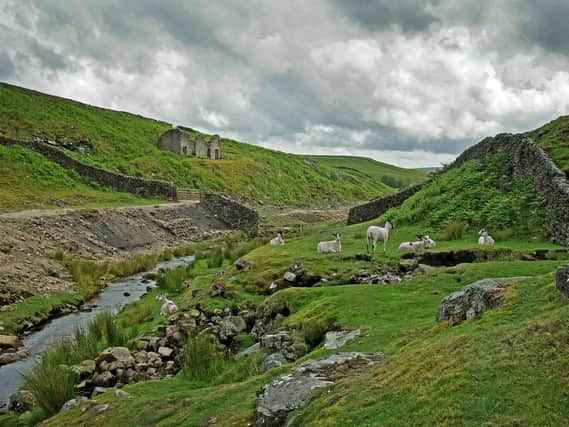New ten year tree planting plan in the Yorkshire Dales National Park could provide opportunities for farmers


The authority’s woodland strategy for the past 25 years had seen it working with farmers and landowners to introduce about 5,500 acres of trees, but a massive acceleration of planting is now planned.
By 2030, the authority aims to create about 15,000 acres of woodland habitats, with priority given to projects that strengthen habitat networks, increase carbon storage and help to reduce flooding.
Advertisement
Hide AdAdvertisement
Hide AdDuring the meeting members voted to adopt the new ten-year ‘Dales Woodland Strategy’, the second of its kind, which will set these ambitions in motion over the next decade.
The strategy has been devised by the Dales Woodland Forum, a partnership of landowners, charities and public bodies such as the Forestry Commission, CLA, Friends of the Dales and the Woodland Trust.
The planting would take the area of the National Park covered by woodland, which is currently the smallest of any of England’s National Parks at 4.3 per cent, to seven per cent.
While concerns have previously been raised over potentially harming some of the National Park’s vistas by covering them in trees, members were told the forum had developed an ambition that was entirely compatible with retaining a primarily agricultural landscape.
Advertisement
Hide AdAdvertisement
Hide AdMember Champion for the Natural Environment at the Yorkshire Dales National Park Authority, and member of the Dales Woodland Forum, Ian McPherson, said: “We have agreed that the open, farmed character of the Yorkshire Dales must be conserved and that is why the new Dales Woodland Strategy clearly sets out that any new woodland must enhance the landscape.”
The meeting heard it was likely increasing woodland cover would play an important role in helping to sustain farm businesses with more trees providing new sources of revenue to improve viability, and would provide shelter for livestock as the climate changes.
“The new ambitions represent a significant scaling up of woodland creation and management in the National Park, but we are all clear that trees must be planted in the right place and for the right reasons,” Mr McPherson.
Mr McPherson went on to say the new strategy acknowledges the role that existing conifer plantations play within the Dales and said careful management of them will be ‘key’ to survival of the native red squirrel.
Advertisement
Hide AdAdvertisement
Hide Ad“I would like people to share my enthusiasm about the prospect of more trees in the National Park.
“Trees sequester carbon and can help with water quality, natural flood management and, crucially, farm business viability.
“Managing existing woodlands will become an equal priority to creating more woodlands. Existing mature field trees, usually marking boundaries, are hugely important in the landscape, as are existing hedgerows.
“New woodland is also beautiful, it attracts wildlife and the good news is that public money is available for it.”
Mr McPherson said the “starting point” will be to work with people to expand or connect existing native woodlands.